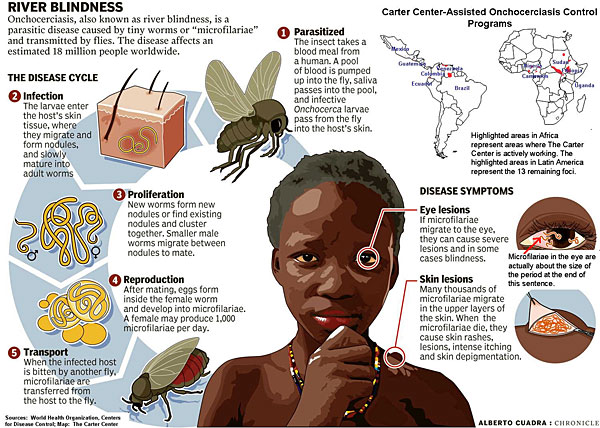NBC Nightly News reported about the tanning bed industry. "While the risk of
skin cancer is well known, [a] dire warning...compared the effects to cigarette smoking and arsenic. Chief medical editor Nancy Snyderman, MD, explained that according to the World Health Organization, an exponential increase in skin cancer can be linked to the use of indoor sun and tanning booths. For people who start using the booths before the age of 30, their risk goes up 75 percent."
The
Tampa Tribune reports that the declaration by the WHO's International Agency for Research on Cancer (IARC) that tanning booths emitting ultraviolet radiation are carcinogenic simply echoes what dermatologists say they've suspected for years. The declaration, published in the August issue of The Lancet Oncology, ranked tanning beds right up there with tobacco smoke and mustard gas. Dermatologist Neil Alan Fenske, MD, of the University of South Florida, pointed out that for some time, tanning beds that use ultraviolet rays were suspected of causing skin cancer. He stated that the members of the American Academy of Dermatology have been fighting this battle for a number of years, adding that patients who have received abundant amounts of light via tanning beds have developed extraordinary numbers of skin cancers.
The
Detroit Free Press reports that IARC made its announcement after finding enough evidence in people and mice that UVA and UVB rays damage skin-cell DNA, sometimes in cancer-blocking genes. The damage may result in three types of skin cancer: the less dangerous basal and squamous cell skin cancers and melanoma, explained dermatologist Darius Mehregan, MD, of Wayne State University. The Free Press notes that the American Academy of Dermatology had no comment on the international decree, and calls to the Indoor Tanning Association were not immediately returned.
According to
MedPage Today , citing evidence from case-control studies and a meta-analysis, the IARC monograph working group 'raised the classification of the use of UV-emitting tanning devices to Group 1, 'carcinogenic to humans.' In addition, the working group also cited case-control studies showing 'consistent evidence of an association between the use of UV-emitting tanning devices and ocular melanoma.' In fact, the IARC reclassified all forms of ultraviolet radiation as a single carcinogenic entity. Historically, mutations caused by exposure solar radiation had been attributed to UVB, but the same mutation was identified in UVA-induced skin tumors in mice. In its update, the IARC moved UV radiation as a whole into the highest-risk category, eliminating distinctions between UVA, UVB, and UVC.
The
Philadelphia Inquirer quoted John Overstreet, executive director of the Indoor Tanning Association, as saying, Because tanning beds produce the same UV light as the sun, overexposure and abuse of our product -- just like overexposure to sunlight -- is associated with an increased risk for some types of skin cancer.
USA Today faults industry promotion of questionable health benefits of tanning. USA Today
editorializes, Despite mounting evidence linking tanning beds and cancer, the Indoor Tanning Association, which represents the industry, has shamelessly promoted questionable health benefits instead. In fact, its most recent campaign has been to convince people that tanning beds are beneficial because they are a source of Vitamin D. A few years ago, the tanning industry encouraged now-disproven claims that the mainly UVA ultra-violet rays emitted by sun beds do not do the same damage as the sun's. In 2008, its director termed assertions of a link between tanning beds and melanoma 'irresponsible.' USA Today argues, It's the industry that appears irresponsible, much as Big Tobacco once was as it tried to refute science. The paper calls for better education about tanning dangers, along with stronger warnings and action against misleading health claims.

 9:29 AM
9:29 AM
 Keshav Bhat
Keshav Bhat

![Reblog this post [with Zemanta]](http://img.zemanta.com/reblog_e.png?x-id=47160185-b524-4e19-80d4-ce3a67bb9117)
![Reblog this post [with Zemanta]](http://img.zemanta.com/reblog_e.png?x-id=1bb6c397-5664-4421-a04c-ded755eee04b)

![Reblog this post [with Zemanta]](http://img.zemanta.com/reblog_e.png?x-id=808470cb-c2f5-4f04-bb4c-c27796ab4142)
![Reblog this post [with Zemanta]](http://img.zemanta.com/reblog_e.png?x-id=3c4e48a8-df9d-476d-9f9e-f25938026dd7)

![Reblog this post [with Zemanta]](http://img.zemanta.com/reblog_e.png?x-id=443f9a7a-5894-42de-ab2b-e14c6118dbe6)
![Reblog this post [with Zemanta]](http://img.zemanta.com/reblog_e.png?x-id=4373b57e-eaa2-46b1-b694-1202ca15d75d)

![Reblog this post [with Zemanta]](http://img.zemanta.com/reblog_e.png?x-id=87c21e6d-0fd5-4a6a-9acd-7c92a70614ad)
![Reblog this post [with Zemanta]](http://img.zemanta.com/reblog_e.png?x-id=ca78ebfe-594d-4411-af96-39cc000d3966)
![Reblog this post [with Zemanta]](http://img.zemanta.com/reblog_e.png?x-id=d625e3d1-a1e0-4125-86b3-b97aba5b169d)
![Reblog this post [with Zemanta]](http://img.zemanta.com/reblog_e.png?x-id=1e86eea7-dd8d-4922-bcdb-f5711e51c6a6)
![Reblog this post [with Zemanta]](http://img.zemanta.com/reblog_e.png?x-id=619c6bc5-9cce-4fcd-b6fa-8766461ad60e)
![Reblog this post [with Zemanta]](http://img.zemanta.com/reblog_e.png?x-id=3abcecba-3e68-4f58-a5c8-85f0109ec7ef)

![Reblog this post [with Zemanta]](http://img.zemanta.com/reblog_e.png?x-id=648059da-d7aa-4bb5-a965-ff8f9088c5dd)

![Reblog this post [with Zemanta]](http://img.zemanta.com/reblog_e.png?x-id=f323677c-39af-4478-9e18-0df594a58d16)
![Reblog this post [with Zemanta]](http://img.zemanta.com/reblog_e.png?x-id=4f016621-ff22-446c-993a-fc272d9900cc)

![Reblog this post [with Zemanta]](http://img.zemanta.com/reblog_e.png?x-id=158ff181-f8f4-4539-8c24-cffebd998bbc)
![Reblog this post [with Zemanta]](http://img.zemanta.com/reblog_e.png?x-id=93341d08-800a-4f23-ba1d-bb64fd08b373)
![Reblog this post [with Zemanta]](http://img.zemanta.com/reblog_e.png?x-id=04714415-34f0-402b-a8ed-06be72af9cde)



